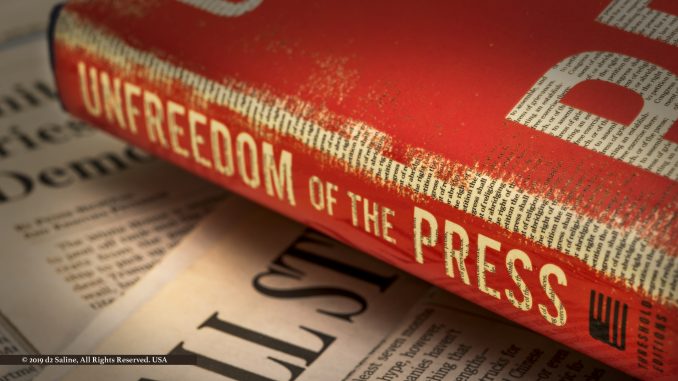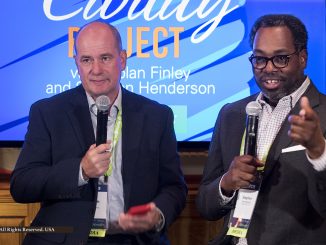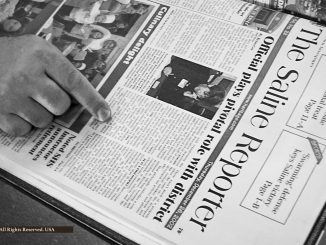
This scholarly examination of journalism in history and function is currently in its twelfth week on the 2019 New York Times Best Seller List. [1-4]
Its title is a play on Amendment I to the United States Constitution, prohibiting any law by our Congress that would abridge freedom of the press. In titling his book Unfreedom of the Press, author Mark R Levin has not only cast a take on modern media in opposition to this, but also set a foundation for an examination of “fake news.” [5,6]
He opened and closed by asserting that his purpose in writing was “to jump-start a long-overdue and hopefully productive dialogue among the American citizenry” on these matters. [pages 2, 227]
As far as establishing foundation and framework in support of this end, Mr Levin has largely succeeded here.
Less succinctly yet no less forcefully, he argued throughout his text that an objective press, free of bias, has never existed.
With the founding of our nation came “a colonial press” that was “couragoue, vigorous, and openly partisan about America’s principles in promoting and defending the cause and arguments for the revolution — and, in fact, [reflected] the remarkable unity of Americans during the revolutionary period.” [page 57]
This was followed by a period lasting until sometime in the 1860s known as the “party-press era.” Unfreedom of the Press has this down a “a time when most newspapers aligned themselves with a politician, campaign, or party, and did so openly.” [page 62]
Notions of “objectivity,” coupled with a “‘scientific’ … approach to news gathering and reporting” are relatively new, it turns out, dating back just over a century. And yet they have proven “impossible for most newsrooms and journalists” to implement. [pages 16-19, 217-218]
Mark Levin provided five modern day examples in support of these assertions. [page 219]
This has come about, he argued, between two extremes of information onslaught — or lack thereove. At one point he referenced Walter Lippmann, who wrote in 1922 that the average citizen was unable to grasp events of that “large and complex society,” let alone “rationally discuss or act on them. [6]
‘Only by insisting that problems shall not come up to him until they have passed through a procedure, can the busy citizen of a modern state deal with them in a form that is intelligible.’ [pages 33-34]
Just forty years later, the twenty-four-hour news cycle pressured journalists to move from a role of news gathering to news making. His favored explanation of this came from The Image: A Guide to Pseudo-Events in America. [7]
We used to believe there were only so many ‘events’ in the world. If there were not many intriguing or startling consequences, it was not the fault of the reporter. He could not be expected to report what did not exist. [page 131]
Within the last hundred years, however, and especially in the twentieth century, all this has changed. We expect papers to be full of news. If there is no news visible to the naked eye, or to the average citizen, we still expect it to be there for the enterprising newsman.
The successful reporter is one who can find a story, even if there is no earthquake or assassination or civil war.
If he cannot find a story, then he must make one ….
Unfreedom of the Press author Mark Levin describes himself as a conservative and can be heard weekday evenings on WJR in southeast Michigan. It can be difficult to find a summary of who he is and what he’s about on the Internet, apart from an image that he himself appears to advocate. But a 2013 opinion piece in The New Yorker by Kyle Smith strikes one of the better balances. [8,9]
By and large, book reviews covering Unfreedom of the Press tend to skew according to political leaning of their hosts. There can be no doubt that reformed “Never Trumper” Mark Levin is now a zealous advocate of the president, to be counted among Dan Bongino and Rush Limbaugh. [10-18]
It is in this vein that Unfreedom of the Press is weakest, at times outright strained in its attempts to persuade. [pages 9, 21-24, 71-79]
But to dismiss this book based on such wrappers is not just a too convenient excuse for those invested in media enterprises to avoid necessary scruitiny, but a far more damaging disservice to their audiences.
References
- Bracketed page number references in this review correspond to First Threshold Editions hardcover Unfreedom of the Press by Mark R Levin (May 2019) Simon & Schuster.
- “Unfreedom of the Press” Simon & Schuster.
- “Unfreedom of the Press by Mark R Levin” The Mark Levin Show.
- “The New York Times Best Sellers” The New York Times.
- “The Bill of Rights: A Transcription” National Archives.
- “The (almost) complete history of ‘fake news’” Mike Wendling (January 22, 2018) BBC News.
- “Walter Lippmann” Encyclopaedia Britannica.
- “The Image in the Age of Pseudo-Reality” Megan Garber (December 1, 2016) The Atlantic.
- “The Mark Levin Show” WJR.
- “Why are major media outlets ignoring bestselling writer Mark Levin?” Kyle Smith (September 1, 2013) The New Yorker.
- “Unfreedom of the Press review: Mark Levin’s Trumpist take on the first amendment” Lloyd Green (May 18, 2019) The Guardian.
- “Its Own Worst Enemy” Jeffery Cimmino (May 19, 2019) The Washington Free Beacon.
- “‘Unfreedom of the Press’ Is Full Of Bombast and Bile” Annalisa Quinn (May 21, 2019) NPR.
- “Limbaugh: Mark Levin’s ‘Unfreedom of the Press’” David Limbaugh (May 31, 2019) Conservative Review.
- The Dan Bongino Show (home page).
- “Dan Bongino” Media Matters for America.
- Rush Limbaugh (home page).
- “Rush Limbaugh” Biography.



